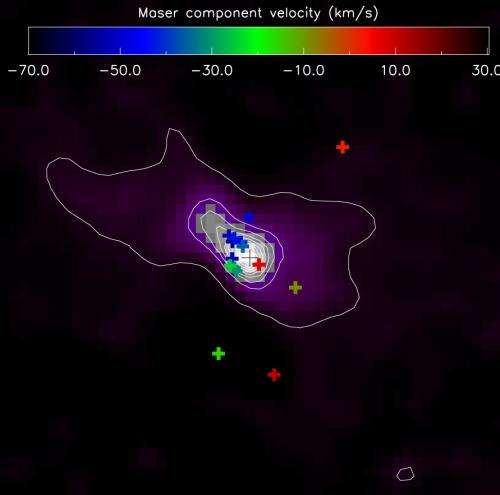Stars akin to the Sun also explode when they die

The birth of planetary nebulae, resulting from the death of low and intermediate mass stars, is usually thought of as a slow process, in contrast with the intense supernovae that massive stars produce. But a recent study led by researchers at the Institute of Astrophysics of Andalusia (IAA-CSIC) in collaboration with the Center for Astrobiology (CAB, CSIC/INTA) has revealed the fact that explosive phenomena also intervene in the formation of planetary nebulae.
"In a few thousand million years, the sun will exhaust its nuclear fuel, expand into a red giant and eject a major part of its mass. The final result will be a white dwarf surrounded by a glowing planetary nebula. Even though every star with a mass below ten solar masses goes through this short but important final transition, many details of the process still evade us", says José Francisco Gómez, IAA-CSIC researcher in charge of the project.
The study of IRAS 15103-5754, part of a group of sixteen objects known as 'water fountains', has yielded important clues concerning this final stage. 'Water fountains' are mature stars in a state of transition from red giants to planetary nebulae which display jets of ejected material that can be detected from intense radiation produced by water vapor molecules (water maser emission).
IRAS 15103-5754 stands out within the small group under study because it has been observed that the velocity of the material inside the jet increases in proportion to the distance from the central star. "Water molecules are generally destroyed soon after the planetary nebula is formed, and in the rare cases where a maser emission has been detected, the velocity has always been very low", says Luis F. Miranda (IAA-CSIC, University of Vigo). "In IRAS 15103-5754 we are seeing for the first time a water maser emission at velocities of hundreds of kilometers per second. We are witnessing the transition of a star into a planetary nebula in real time".
"The high velocity can only be explained by the occurrence of an explosion". Our results show that, contrary to the most widespread theories, when a star turns into a planetary nebula an enormous explosion is produced – short-lived but highly energetic – which will determine the evolution of the star in its last phases of life", says José Francisco Gómez (IAA-CSIC).
This study has established the importance of 'water fountains' in understanding how the symmetry of stars is broken in the final stages of their lives, and thus to shed light on the outstanding variety of planetary nebulae that we encounter.
More information: José F. Gómez et al. "The first water fountain collimated outflow in a planetary nebula". The Astrophysical Journal. DOI: 10.1088/0004-637X/799/2/186
Journal information: Astrophysical Journal
Provided by Instituto de Astrofísica de Andalucía





















